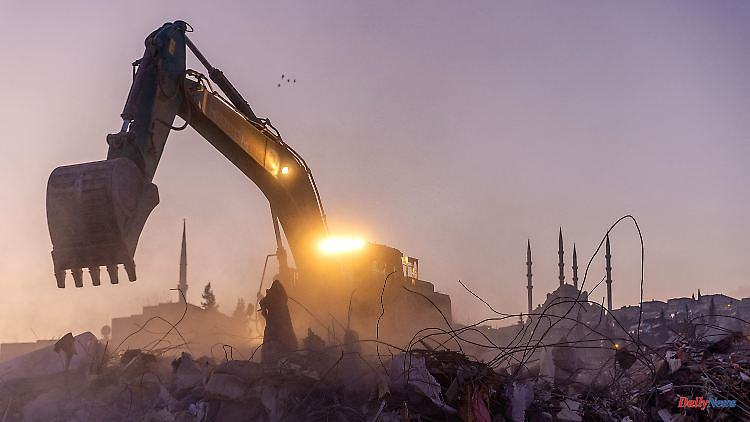The death toll recovered from the earthquake continues to rise. Occasionally, survivors are still found. While the government promises a quick and safe reconstruction, videos showing President Erdogan's contradictory relationship to building regulations are circulating on the internet.
According to the government, after the devastating earthquakes in the Turkish-Syrian border region, the construction of new houses on the Turkish side is to begin in March. According to reports in the daily newspaper "Hürriyet" and the state broadcaster TRT, the Turkish Minister for Urban Planning, Murat Kurum, said that, among other things, earthquake-proof residential buildings are to be built that should not be higher than three to four floors. In this context, Kurum spoke of a master plan that is to be developed together with experts. Among other things, the settlement of unsuitable areas should be excluded.
According to "Hürriyet", the planning for the construction work in the region affected by the earthquake should be completed in the next two to three months. According to Kurum, the first construction work should start as early as next month.
As the government announces earthquake-proof reconstruction, internet users in Turkey are using dozens of old tweets and videos to remind them that President Recep Tayyip Erdogan had promised this before, but he deliberately accepted the failure to comply with building regulations. In a 2018 video clip, Erdogan congratulates officials on introducing an amnesty law declaring six million buildings with proven security vulnerabilities habitable. In a tweet from 2013 that was shared thousands of times, Erdogan said: "Buildings kill people, not earthquakes. We have to learn to live with earthquakes (...) and take appropriate measures."
According to experts, non-compliance with building standards can explain the extremely high number of victims in the earthquake region. In Turkey alone, the number of victims rose to over 40,000 on Saturday, according to official figures. This was announced by the head of the Turkish civil protection authority Afad, Yunus Sezer. In Syria, around 5,900 people have died in connection with the devastating earthquakes. However, the number is only updated irregularly. In total, more than 46,000 people lost their lives in both countries.
Meanwhile, the reports of rescues from Turkey are still not coming to an end. Helpers are said to have rescued three people, including a child, from the rubble of a collapsed house in Antakya. They were buried for 296 hours, reported the state broadcaster TRT. The report could not be independently verified. However, the 12-year-old child did not survive despite medical treatment, the state news agency Anadolu said.
According to the information, the three people were a man, a woman and their child. A video showed how the helpers brought the man and the woman to an ambulance on a stretcher and medics treated the child. After his rescue, the surviving father was visited in the hospital by the well-known American TV doctor Mehmet Oz, Anadolu reported. Pictures showed Oz, a cardiologist of Turkish origin, standing at the man's bedside and listening intently to him. The man said he drank his own urine to survive, according to Anadolu. Two more of his children died under the rubble.
Meanwhile, the public prosecutor's office continues to investigate possible culprits for the collapsed buildings in the earthquake region. According to Anadolu, a total of 400 people are suspected of being partly responsible for the collapse of the buildings due to possible construction defects. 120 people were arrested, it said.
As the Turkish Minister of Forestry Vahit Kirisci announced on the state broadcaster TRT, the affected area in Turkey alone covers an area of 103,000 square kilometers and has a population of 13.5 million people, which corresponds to about 17 percent of Turkey's total population.












